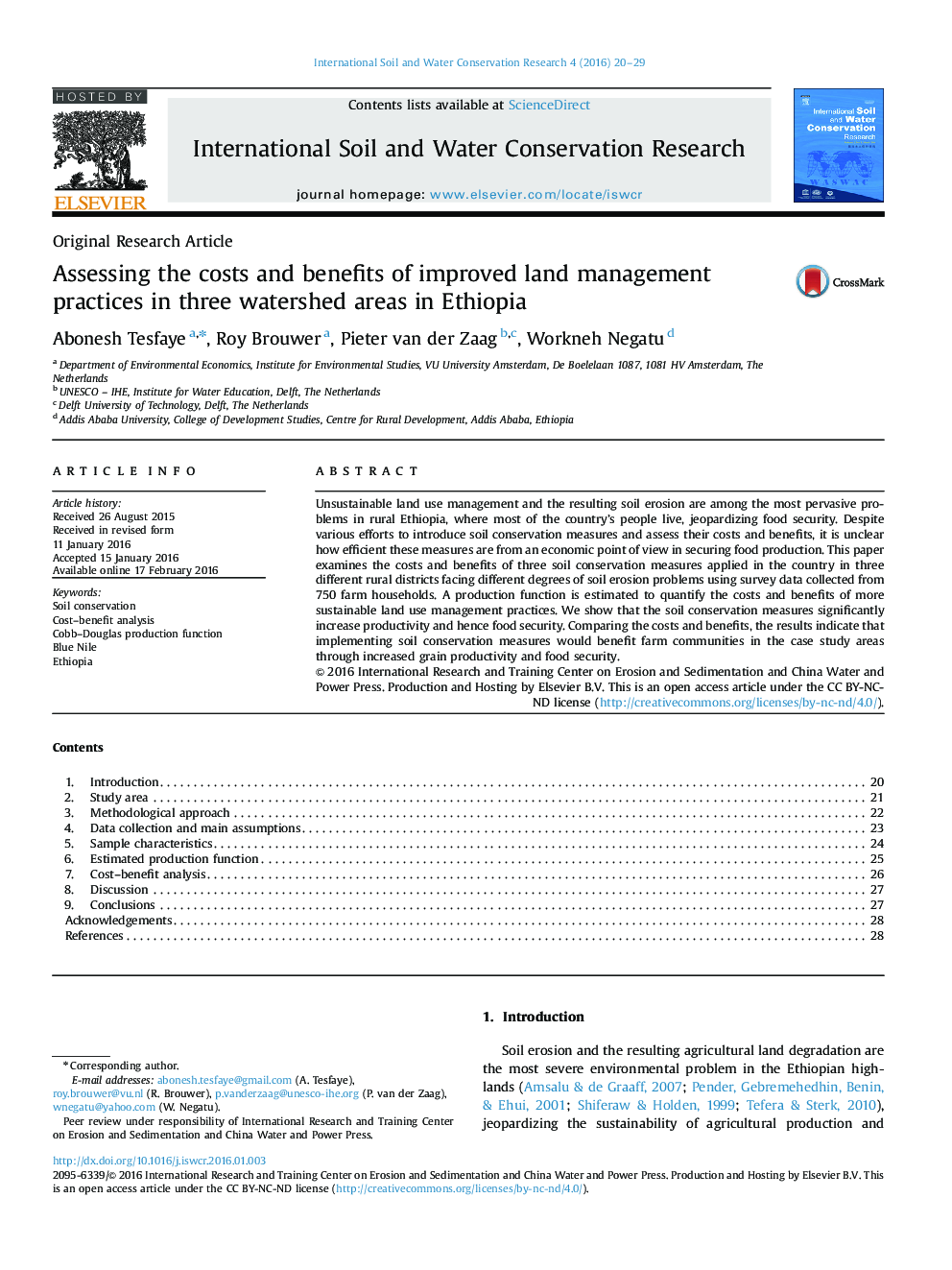| Article ID | Journal | Published Year | Pages | File Type |
|---|---|---|---|---|
| 4452071 | International Soil and Water Conservation Research | 2016 | 10 Pages |
•We examine the on-site costs and benefits of three major soil conservation measures.•A production function is estimated as the basis for the cost–benefit analysis.•We show that soil conservation measures significantly increase productivity.•A longer term perspective is needed for these private welfare gains to materialize.
Unsustainable land use management and the resulting soil erosion are among the most pervasive problems in rural Ethiopia, where most of the country’s people live, jeopardizing food security. Despite various efforts to introduce soil conservation measures and assess their costs and benefits, it is unclear how efficient these measures are from an economic point of view in securing food production. This paper examines the costs and benefits of three soil conservation measures applied in the country in three different rural districts facing different degrees of soil erosion problems using survey data collected from 750 farm households. A production function is estimated to quantify the costs and benefits of more sustainable land use management practices. We show that the soil conservation measures significantly increase productivity and hence food security. Comparing the costs and benefits, the results indicate that implementing soil conservation measures would benefit farm communities in the case study areas through increased grain productivity and food security.
